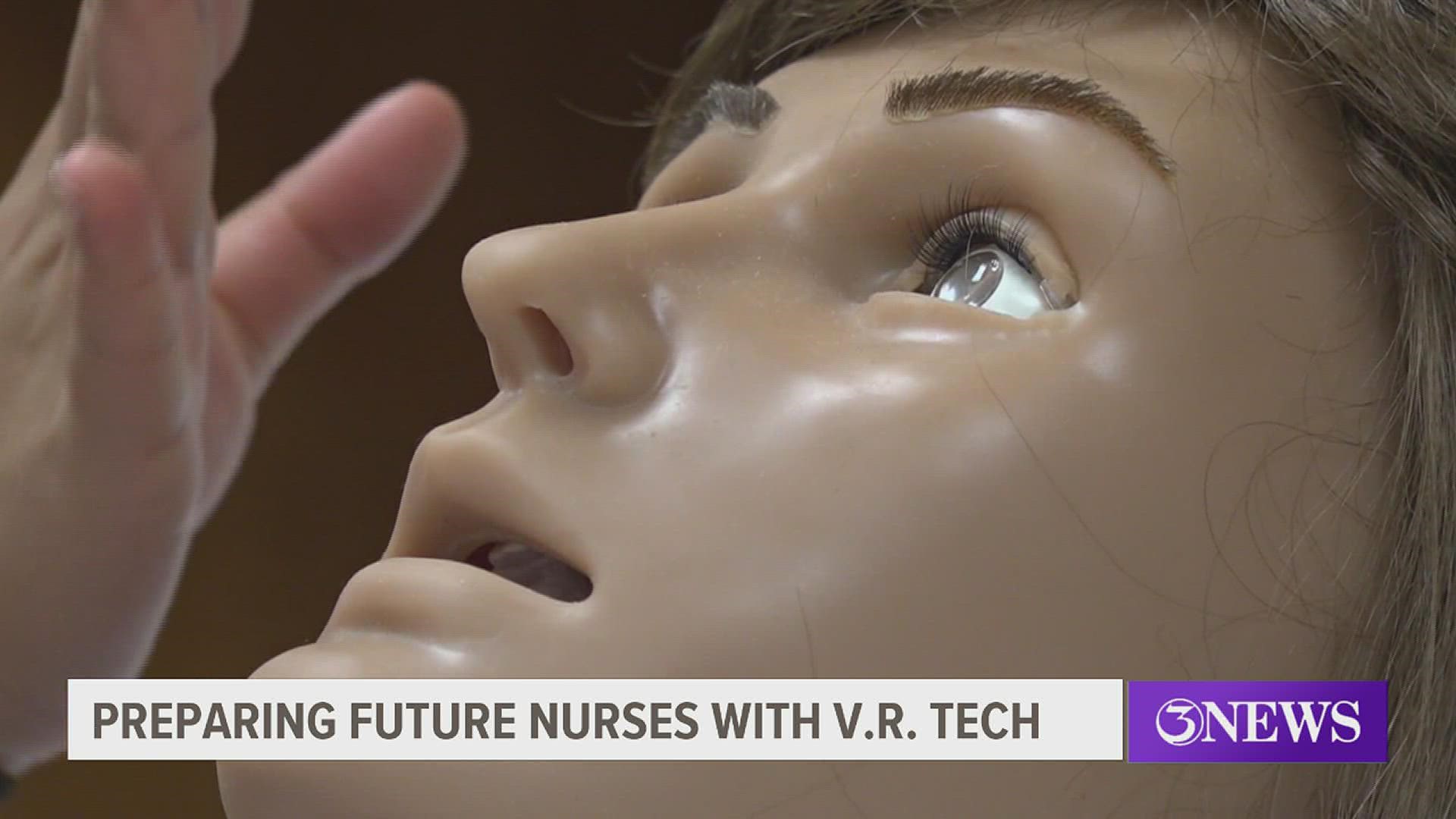CORPUS CHRISTI, Texas — Texas A&M University-Corpus Christi is introducing nursing students to cutting edge technology that is helping prepare them for their future in the medical field.
Thursday, the Nursing and Health Sciences Department opened their doors to the public as they debuted new mixed reality headsets, said to be a game changer in their leading experience.
Ashlynn Lobrecht is a nursing student at TAMU-CC and is excited for the potential the new interactive lab technology has to offer.
"With the technology we have, it helps put the classroom setting together along with going to clinical," Lobrecht said. "I always tell people our clinical settings here, is the bridge between a classroom and going in and taking care of actual patients."
One room inside the College of Nursing and Health Sciences at TAMUCC is specifically designated for labor and delivery. The mixed reality goggles help the students see what is going on during the simulated delivery.
"I think it is the coolest thing in the world." Lobrecht said. "Having those goggles and seeing what actually happens internally with the mom and how the baby responds to different situations. Really helps put everything together."
Nicolas Esquivel has been a student since 2019. He said that the hands on tools and interactive mannequins help provide students with resources that weren't always available to them especially during the COVID-19 pandemic.
"Students weren't allowed to go to the hospital, so really having the resources here helped the students get that advantage to take care of those sick patients," Esquivel said.
The goggles were purchased last year with funds from the CARES Act. They are displayed with a holographic image to enhance labor and delivery simulations, allowing students hands on training through different scenarios.
The hologram displays a life like infant through the birthing canal.
Ashley Dominguez is the simulation lab supervisor. He said that the new technology allows a deeper learning experience, but also a deeper understanding of difficult deliveries.
Lobrecht said the simulation is an integral part of the learning experience. Now, the college will be able to expand its simulation training thanks to two recent grants announced Thursday totaling over $500,000.
"Were so thankful for the Kenedy foundation for everybody to help us to get the next edge, to get in the field and be prepared to be great nurses out there," Esquivel said.
$499,682 came from the Health Resources and Services Administration and $20,000 came from the The John G. and Maria Stella Kenedy Memorial Foundation.
More from 3News on KIIITV.com:
- 'They are felony charges': Beeville teen locked up for making prank call to 911 about a school threat
- 'Not a non-stop yet': Corpus Christi airport now has direct, but not non-stop, flights to Denver
- Mosquito problems plague normally busy outdoor seating areas at Port Aransas restaurants
- 'Decades of neglect': How Corpus Christi leaders are responding to awful street conditions
- At least five incidents of guns on school campuses in the Coastal Bend this school year so far
- Corpus Christi program that serves people with special needs has equipment stolen
Want to send us a news tip?
Put your name and contact information below so we can get in touch with you about your story should we have questions or need more information. We realize some stories are sensitive in nature. Let us know if you'd like to remain anonymous.
If you do not have a photo/video to submit, just click "OK" to skip that prompt.

